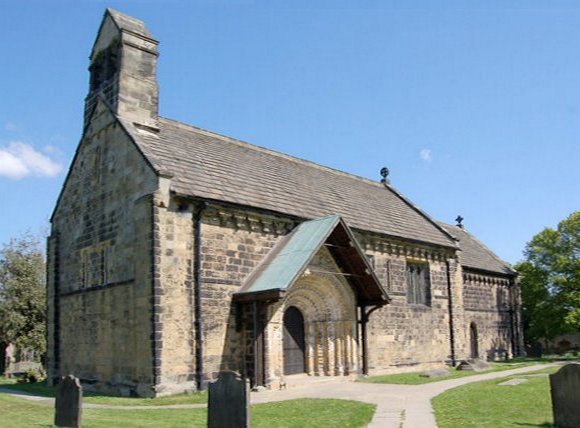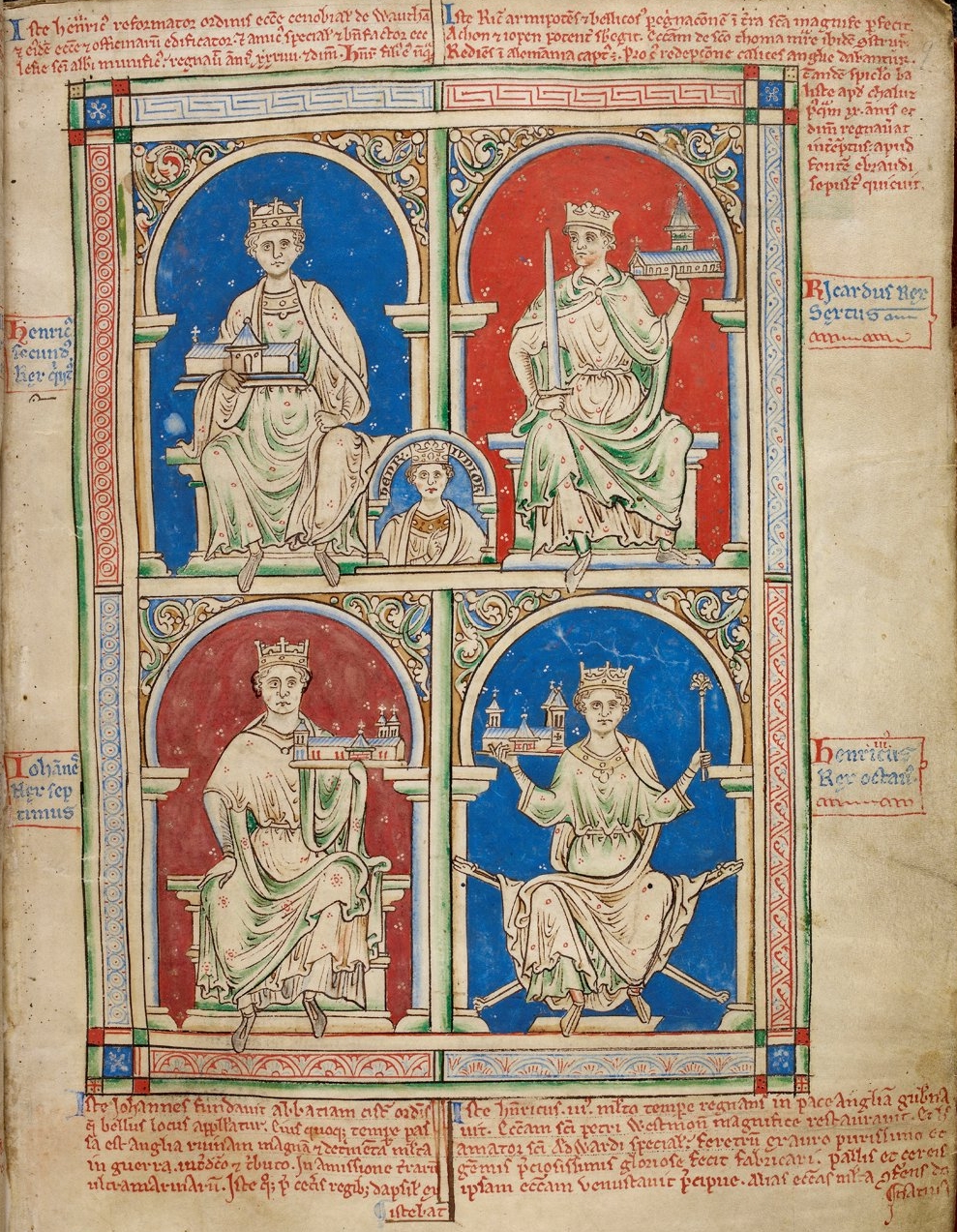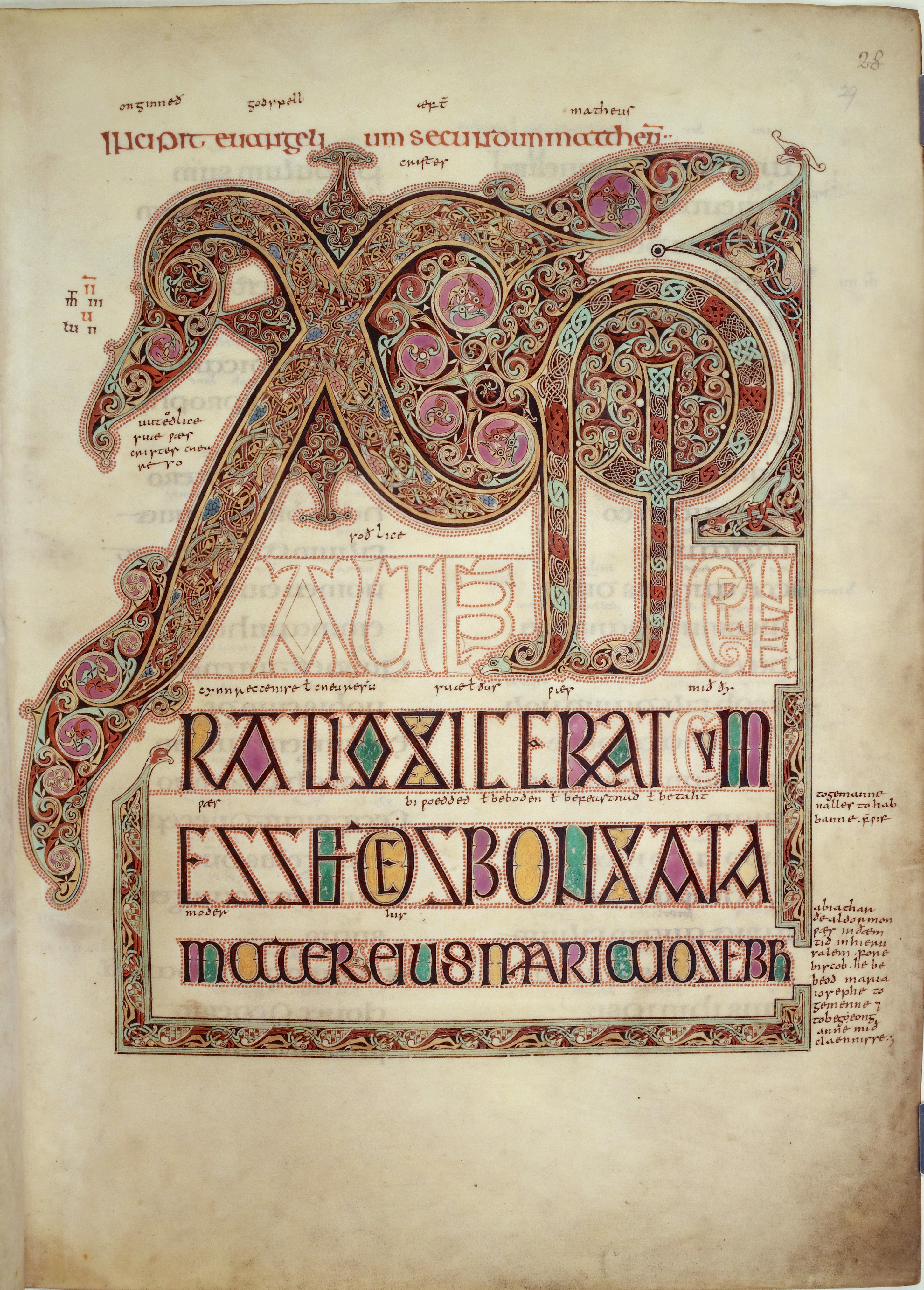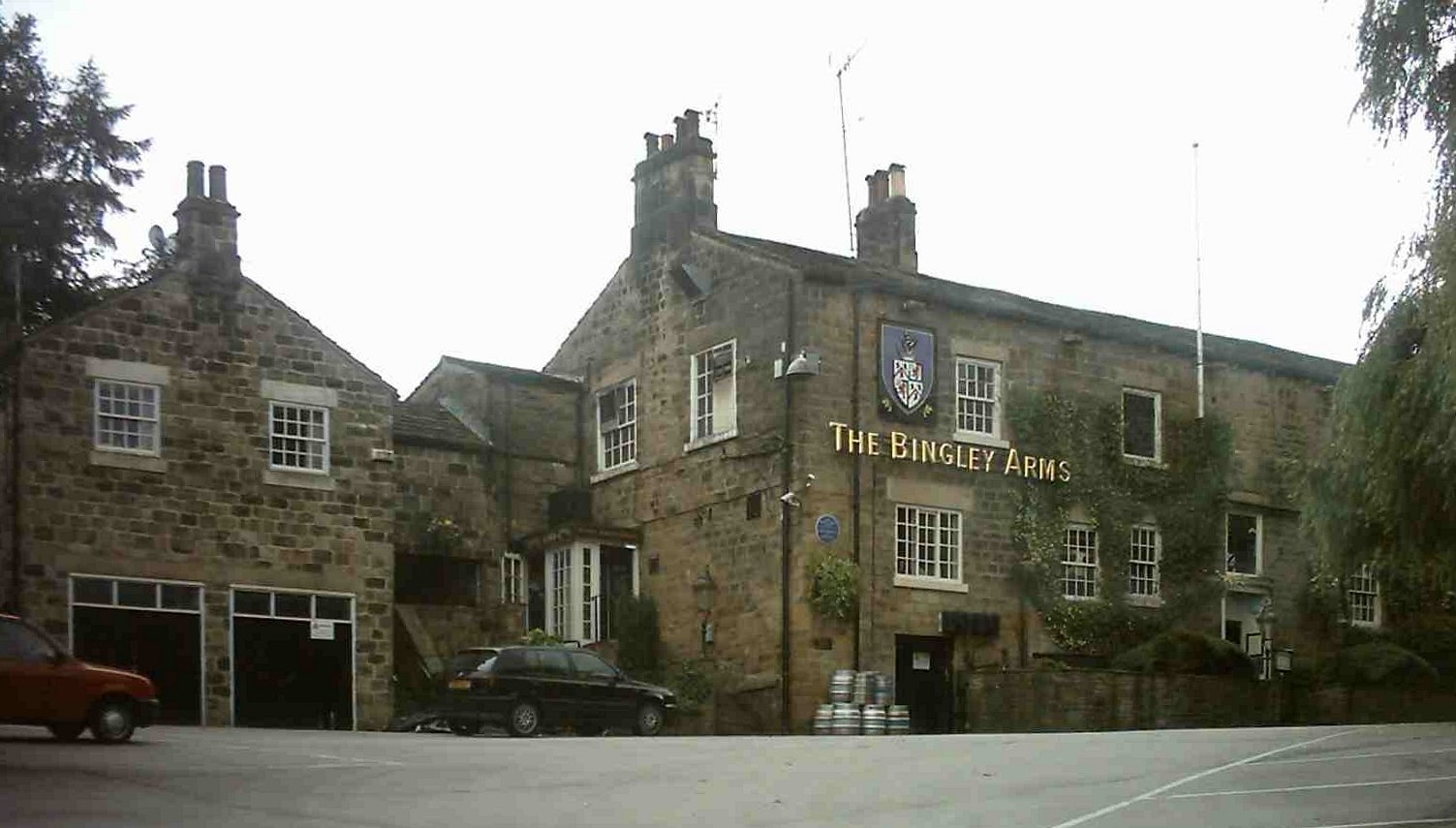|
All Hallows Church, Bardsey, West Yorkshire
All Hallows Church in Bardsey, West Yorkshire, England is an active Anglican parish church in the archdeaconry of Leeds and the Diocese of Leeds. The Bardsey Millennium Tapestry, created by many people from the village, is hung at the west end of the north wall of the church. The tapestry took nearly five years to complete and was officially unveiled in October 2001. History The church was built in the 9th century; its tower is the oldest surviving part from between 850 and 950 AD. The latest restoration was carried out by Charles R. Chorley and Son of Leeds in 1909. The lower parts of the tower and the central nave walls date from the 9th century while the upper parts of the tower date from the 10th century. Between 1000 and 1400 saw the addition of a north and south aisle and the Norman doorway being moved to its present position, however a porch has since been added obscuring much of this doorway. A north chapel which now serves as a vestry was constructed in 1521 by r ... [...More Info...] [...Related Items...] OR: [Wikipedia] [Google] [Baidu] |
Bardsey, West Yorkshire
Bardsey, West Yorkshire, England is a small village in the City of Leeds metropolitan borough, north east of Leeds city centre. The village is in the LS17 Leeds postcode district. It is part of the civil parish of Bardsey cum Rigton. The village itself lies just off the A58 road between Leeds and Wetherby. It is a predominantly middle class area with a high proportion of retired residents. Housing is mixed; while most is private, there is council housing situated near Keswick Lane. Facilities include a public house and sports club (with a cricket pitch and two football pitches). Bardsey also has a primary school and an Anglican church. Etymology The name of Bardsey is first attested in the Domesday Book of 1086 as ''Berdesei'' and ''Bereleseie'', situated in the hundred of Skyrack. The second element comes from the Old English word ''ēg'' ('island') and the first is agreed to be from a personal name. Exactly what this name was is not certain, but the name ''Beornrǣd'' ... [...More Info...] [...Related Items...] OR: [Wikipedia] [Google] [Baidu] |
Anglican
Anglicanism is a Western Christian tradition that has developed from the practices, liturgy, and identity of the Church of England following the English Reformation, in the context of the Protestant Reformation in Europe. It is one of the largest branches of Christianity, with around 110 million adherents worldwide . Adherents of Anglicanism are called ''Anglicans''; they are also called ''Episcopalians'' in some countries. The majority of Anglicans are members of national or regional ecclesiastical provinces of the international Anglican Communion, which forms the third-largest Christian communion in the world, after the Roman Catholic Church and the Eastern Orthodox Church. These provinces are in full communion with the See of Canterbury and thus with the Archbishop of Canterbury, whom the communion refers to as its ''primus inter pares'' (Latin, 'first among equals'). The Archbishop calls the decennial Lambeth Conference, chairs the meeting of primates, and is ... [...More Info...] [...Related Items...] OR: [Wikipedia] [Google] [Baidu] |
Listed Buildings In Bardsey Cum Rigton
Bardsey cum Rigton is a civil parish in the metropolitan borough of the City of Leeds, West Yorkshire, England. It contains 16 listed buildings that are recorded in the National Heritage List for England. Of these, one is listed at Grade I, the highest of the three grades, and the others are at Grade II, the lowest grade. The parish contains the villages of Bardsey, and East Rigton, and is otherwise rural. The most important listed building is All Hallows Church which contains Anglo-Saxon material, and is listed at Grade I. The other listed buildings consist of houses and cottages, farmhouses and farm buildings, a sundial A sundial is a horological device that tells the time of day (referred to as civil time in modern usage) when direct sunlight shines by the apparent position of the Sun in the sky. In the narrowest sense of the word, it consists of a fl ... in the churchyard, a public house, and a milestone. __NOTOC__ Key Buildings Refer ... [...More Info...] [...Related Items...] OR: [Wikipedia] [Google] [Baidu] |
List Of Places Of Worship In The City Of Leeds
This article lists open, former and demolished places of worship situated within the boundaries of the City of Leeds. Open places of worship Aberford Adel Allerton Bywater Alwoodley Armley Arthington Bardsey Barwick-in-Elmet Beeston Belle Isle Boston Spa Bramham Bramhope Bramley Burley Burmantofts Calverley Chapel Allerton Chapeltown City Centre Clifford Collingham Colton Cookridge Cottingley Cross Gates Cross Green Drighlington East End Park East Keswick Farnley Farsley Fulneck Garforth Gildersome Gipton Guiseley Halton Halton Moor Harehills Harewood Hawksworth (LS5) Hawksworth (LS20) Headingley Holbeck Horsforth Hunslet Hyde Park Ireland Wood Killingbeck Kirkstall Kippax Lincoln Green Little London Mabgate Meanwood Methley Micklefield Middleton Moortown and Moor Allerton Morley New Farnley Osmondthorpe Otley ... [...More Info...] [...Related Items...] OR: [Wikipedia] [Google] [Baidu] |
Grade I Listed Churches In West Yorkshire
West Yorkshire is a metropolitan county in the Yorkshire and the Humber region of England. Created as a metropolitan county in 1974 after the passage of the Local Government Act 1972, it consists of five metropolitan boroughs, namely the City of Bradford, Calderdale, Kirklees, the City of Leeds and the City of Wakefield. Its area corresponds approximately with the historic West Riding of Yorkshire, and it contains the major towns of Bradford, Dewsbury, Halifax, West Yorkshire, Halifax, Huddersfield, Leeds, and Wakefield. In England, buildings are given listed building status by the Secretary of State for Culture, Olympics, Media and Sport, Secretary of State for Culture, Media and Sport, acting on the recommendation of English Heritage. This gives the structure national recognition and protection against alteration or demolition without authorisation. Grade I listed buildings are defined as being of "exceptional interest, sometimes considered to be internationally important"; ... [...More Info...] [...Related Items...] OR: [Wikipedia] [Google] [Baidu] |
Norman England
England in the High Middle Ages includes the history of England between the Norman Conquest in 1066 and the death of King John, considered by some to be the last of the Angevin kings of England, in 1216. A disputed succession and victory at the Battle of Hastings led to the conquest of England by William of Normandy in 1066. This linked the crown of England with possessions in France and brought a new aristocracy to the country that dominated landholding, government and the church. They brought with them the French language and maintained their rule through a system of castles and the introduction of a feudal system of landholding. By the time of William's death in 1087, England formed the largest part of an Anglo-Norman empire, ruled by nobles with landholdings across England, Normandy and Wales. William's sons disputed succession to his lands, with William II emerging as ruler of England and much of Normandy. On his death in 1100 his younger brother claimed the throne as Hen ... [...More Info...] [...Related Items...] OR: [Wikipedia] [Google] [Baidu] |
Anglo-Saxon
The Anglo-Saxons were a Cultural identity, cultural group who inhabited England in the Early Middle Ages. They traced their origins to settlers who came to Britain from mainland Europe in the 5th century. However, the ethnogenesis of the Anglo-Saxons happened within Britain, and the identity was not merely imported. Anglo-Saxon identity arose from interaction between incoming groups from several Germanic peoples, Germanic tribes, both amongst themselves, and with Celtic Britons, indigenous Britons. Many of the natives, over time, adopted Anglo-Saxon culture and language and were assimilated. The Anglo-Saxons established the concept, and the Kingdom of England, Kingdom, of England, and though the modern English language owes somewhat less than 26% of its words to their language, this includes the vast majority of words used in everyday speech. Historically, the Anglo-Saxon period denotes the period in Britain between about 450 and 1066, after Anglo-Saxon settlement of Britain, th ... [...More Info...] [...Related Items...] OR: [Wikipedia] [Google] [Baidu] |
Bardsey Parish Church - Geograph
Bardsey may refer to: * Bardsey Island, Wales **Bardsey Lighthouse, on Bardsey Island * Bardsey, West Yorkshire, England *Bardsey cum Rigton, West Yorkshire, England See also *Bardsea Bardsea is a village in the ''Low Furness'' area of Cumbria, England. It is two miles to the south-east of Ulverston on the northern coast of Morecambe Bay. It is in the historic county of Lancashire. History Bardsea, or ''Berretseige'', is m ..., Cumbria, England {{geodis ... [...More Info...] [...Related Items...] OR: [Wikipedia] [Google] [Baidu] |
Second World War
World War II or the Second World War, often abbreviated as WWII or WW2, was a world war that lasted from 1939 to 1945. It involved the World War II by country, vast majority of the world's countries—including all of the great powers—forming two opposing military alliances: the Allies of World War II, Allies and the Axis powers. World War II was a total war that directly involved more than 100 million Military personnel, personnel from more than 30 countries. The major participants in the war threw their entire economic, industrial, and scientific capabilities behind the war effort, blurring the distinction between civilian and military resources. Air warfare of World War II, Aircraft played a major role in the conflict, enabling the strategic bombing of population centres and deploying the Atomic bombings of Hiroshima and Nagasaki, only two nuclear weapons ever used in war. World War II was by far the List of wars by death toll, deadliest conflict in hu ... [...More Info...] [...Related Items...] OR: [Wikipedia] [Google] [Baidu] |
Great War
World War I (28 July 1914 11 November 1918), often abbreviated as WWI, was one of the deadliest global conflicts in history. Belligerents included much of Europe, the Russian Empire, the United States, and the Ottoman Empire, with fighting occurring throughout Europe, the Middle East, Africa, the Pacific, and parts of Asia. An estimated 9 million soldiers were killed in combat, plus another 23 million wounded, while 5 million civilians died as a result of military action, hunger, and disease. Millions more died in genocides within the Ottoman Empire and in the 1918 influenza pandemic, which was exacerbated by the movement of combatants during the war. Prior to 1914, the European great powers were divided between the Triple Entente (comprising France, Russia, and Britain) and the Triple Alliance (containing Germany, Austria-Hungary, and Italy). Tensions in the Balkans came to a head on 28 June 1914, following the assassination of Archduke Franz Fe ... [...More Info...] [...Related Items...] OR: [Wikipedia] [Google] [Baidu] |
Bingley Arms
The Bingley Arms is a public house in Bardsey, Leeds, West Yorkshire, England. It claims to be both the oldest surviving business and oldest surviving pub in the United Kingdom. It is possibly the fourth oldest surviving business in Europe. Founding and history The Bingley Arms was originally named The Priests Inn. The Bingley Arms calls itself the oldest pub in Britain, with a history dating back to between AD 905 and AD 953, and says that it served as a safe house for persecuted Catholic priests, and also as a courthouse from around AD 1000 from which offenders were taken to the pillory across the road. The Bingley Arms was featured in a 2005 book review discussion on the invention of traditional public house history, "Great Pub Myths", and "claims to be... the oldest pub in Britain", published in the '' Yorkshire Evening Post''. The Bingley Arms is also a restaurant, and a former winner of the ''Yorkshire Evening Post'' Restaurant of the Year Award. The Automobile Ass ... [...More Info...] [...Related Items...] OR: [Wikipedia] [Google] [Baidu] |
Parish Church
A parish church (or parochial church) in Christianity is the church which acts as the religious centre of a parish. In many parts of the world, especially in rural areas, the parish church may play a significant role in community activities, often allowing its premises to be used for non-religious community events. The church building reflects this status, and there is considerable variety in the size and style of parish churches. Many villages in Europe have churches that date back to the Middle Ages, but all periods of architecture are represented. Roman Catholic Church Each diocese (administrative unit, headed by a Bishop) is divided into parishes. Normally, a parish comprises all Catholics living within its geographically defined area. Within a diocese, there can also be overlapping parishes for Catholics belonging to a particular rite, language, nationality, or community. Each parish has its own central church called the parish church, where religious services take p ... [...More Info...] [...Related Items...] OR: [Wikipedia] [Google] [Baidu] |








